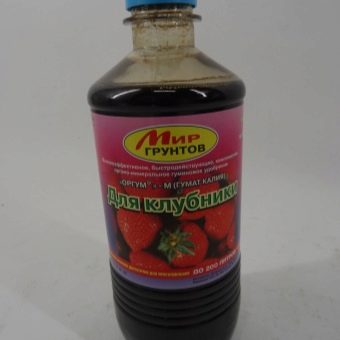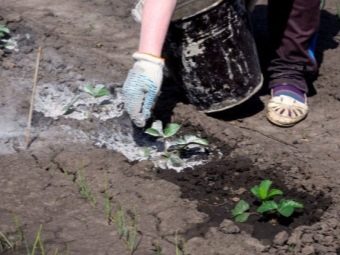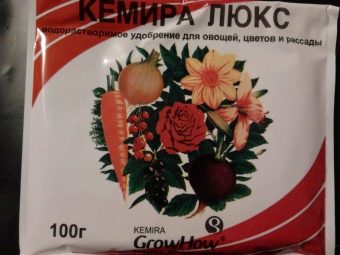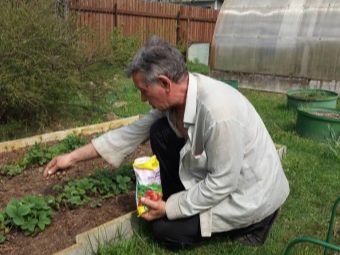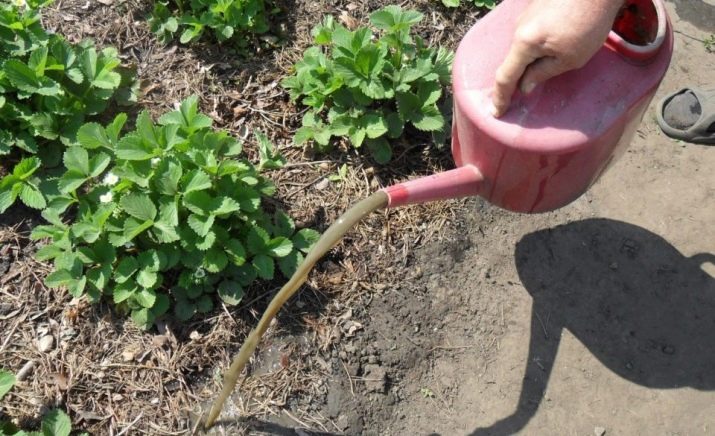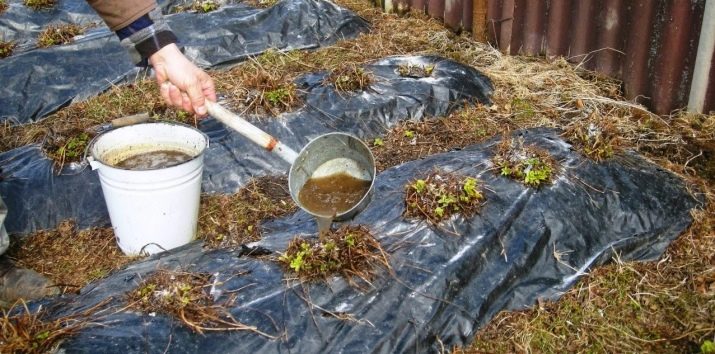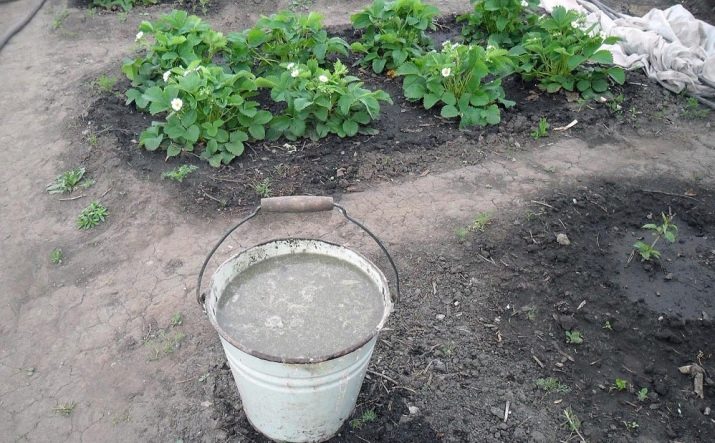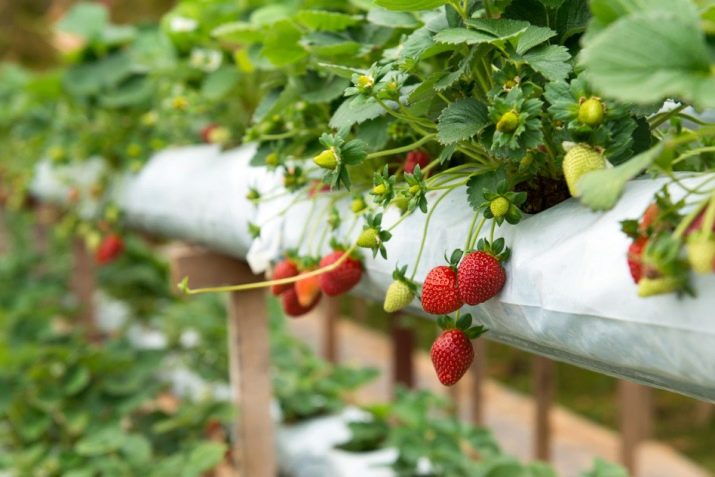Rules for feeding strawberries in the summer
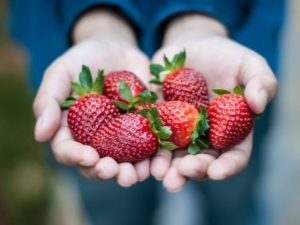
Far from all gardeners can boast of nutrient and fertile soil, therefore, for plants it is necessary to observe crop rotation.However, for strawberries, which are grown for several years at the same place, it is impossible - in summer, summer residents have to rely on the fertilizers to enjoy the fragrant, sweet and juicy berries. The most important are spring and autumn dressings and few people know that in summer the bushes also need organic and mineral elements.
Tasks summer feeding
According to the norms of agricultural engineering during the growing season, strawberries are fertilized three times: in the spring before the bud formation and the ovary appear, in the summer - immediately after harvesting the berries and in the autumn, when preparing the site for the cold winter. And if there are no questions with them, then it is worth telling about the features of summer fertilizer application separately.
In regions with a temperate climate, the first feeding is often carried out at the very end of spring and in cool weather - in the first decade of June, at this very moment the formation of fruits begins. At this stage, the plant needs potassium, so feeding with potassium-containing components will be most effective.
Some gardeners recommend bringing chopped wood ash - it is scattered into the aisle at the rate of 1 cup of powder per strawberry bush. If desired, you can make an ash solution - for this, a glass of the substance is diluted with a liter of warm water, stirred, dissolved in a bucket of cool water and treated so that each bush has about 1 liter of composition.
You can use the finished product - potassium monophosphate, for this, a tablespoon of the composition is diluted in a bucket of water and applied to plantings, while the resulting volume is enough for processing 5 bushes.
Compositions of the Kemira Lux or Universal series show very good efficiency, they are combined with ammonium nitrate granules and potassium sulfate - all components are mixed in equal proportions and added to a spoon of the resulting mixture under each young bush.
Under favorable weather conditions, the plant blooms in spring, so most of the summer work related to fertilizer falls on the last decade of July or the beginning of August, when the harvest was fully harvested. Many people neglect this stage, however, it is at this stage of the growing season that new roots are actively formed and flower buds begin to be laid for the next season, therefore feeding the crop during this period creates a good basis for increasing the crop yield for the next year.
The plant responds well to potassium and other minerals.
Summer Fertilizer Recipes
After the final summer harvest, the following ready-made feedings should be used:
- potassium nitrate - 2 tbsp. liters per 10 liters;
- potassium sulfate (1 part l) and nitrophoska (2 tbsp. l) per one bucket of water;
- vermicompost - 200 grams of the composition, dissolved in 10 l. water.
Very useful to the plant at such a moment will be folk remedies - organic fertilizing, the best composition is considered to be a solution of rotted manure in water in a ratio of 1 to 15. It must be brewed for a couple of days in a tightly closed container so that partial fermentation will begin, the strawberry at the rate of 1 liter under one bush. If you keep the birds, you can use chicken droppings (it can be replaced with goose, quail and others). It has a more concentrated structure than mullein, so when it is diluted use more water, as a rule, the proportion is 1 to 30.
Very good results gives nettle infusion. For its preparation, a bucket of chopped grass is steamed with warm water and left for 5-7 days, as soon as the drink is fermented, you can water the seedlings from a ratio of 1 liter per plant. Testimonials from experienced gardeners show that truly amazing results can be achieved with yeast fertilizers.
As it turned out, this nutritional composition, like no other, contributes to the rapid growth and fruiting of garden and many other crops, including berries.
To prepare such a composition in several ways:
The easiest option is to take 100 grams of fresh yeast and dilute some heated water in a bucket, then leave for a day under the closed lid and add 1/2 liter of infusion to each plant.
The second option also involves the use of live yeast - 0.5 kg diluted in a three-liter jar of heated water and left to warm for 4-5 hours, then the composition is dissolved in 20 liters. water and abundantly watered bushes under the root.
You can take and dry yeast - 5 g dissolve in 500 ml of water and stir a spoon of white sugar, stir everything intensively and leave for a couple of hours. After this time, the solution is filled with cool water to 25 liters and 1 liter of the drug is poured under each bush of strawberries.
You can feed a slightly different composition: for 1 spoon of dry baker's yeast take 2 g of ascorbinka, about 50 g of sugar, a handful of earth, all poured into 5-6 liters of water and let it brew for 24 hours. Before processing, the mixture is diluted with a bucket of water and watered at the root (1 liter of infusion per bush).
Recommendations
Summer feeding is not as important as spring and autumn, however, it is necessary to hold it. Tasty and fragrant berries are loved by everyone, but in order to harvest a good harvest, one should properly take care of their plantings. This culture actively absorbs all the nutrients from the earth rich in minerals and vitamins, forms a bright cover and large berries.
Regardless of the season, you can additionally feed the plant if it grows poorly and develops. In this case, when loosening, you can make a little compost or superphosphate. If the bushes are strong and with a well-developed mustache, then it is not necessary to add additional organic fertilizers, but to feed the earth with potassium compounds does not hurt at all.
In addition, it should be remembered that the care of strawberries in the summer is not limited to fertilizer. It is important to timely remove weeds and inspect plantings for the presence of pests and fungal infections.
All about the care and feeding of strawberries in the summer, see the following video.



